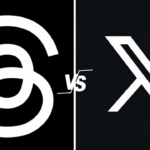
Launching a startup is thrilling yet complex. Funding, arguably the lifeblood of startups, can appear baffling due to its special terminology and intricate stages. Below is a comprehensive and accessible guide now expanded with deeper detail covering every major funding type, startup stage, and the real challenges and myths founders face.
. What Makes a Startup Different?
A startup isn’t just a small business, it’s an ambitious experiment aiming for fast, massive growth, often by disrupting entire industries. While standard businesses seek steady profits and slow expansion, startups intentionally take bigger risks for a shot at disproportionate rewards.
Key traits:
- Pursuit of scalable, sometimes world-changing ideas.
- Rapid hiring and market entry (“blitzscaling”).
- Willingness to lose money early (high “burn rate”) for long-term growth.
- Dependence on external investment.
The Startup Funding Journey: Understanding the Stages
Funding occurs in sequenced “rounds,” each with distinct goals, risks, and investor types. Here’s a practical breakdown:
| Stage | Typical Funding Source | Focus |
|---|---|---|
| Bootstrapping | Founder (personal savings) | Product/idea validation |
| Friends & Family | Personal network | MVP or prototype |
| Pre-Seed | Angel investors, incubators | Team, MVP development |
| Seed | Angels, institutional VC | Product-market fit |
| Series A | Venture Capital | Scaling operations |
| Series B | Growth & late-stage VC | Market expansion |
| Series C & Beyond | Large investors, PE, hedge funds | Global leadership, acquisitions |
| Exit (IPO/Acquisition) | Public markets or strategic buyer | Liquidity, expansion |
Detailed Exploration: Each Major Funding Type
Bootstrapping

What is it?
Starting with personal money, credit cards, or early business revenue instead of outside capital.
- Pros: Retain full ownership, maximum control.
- Cons: High financial risk to founder, limited runway for big bets.
Example:
A designer launches a website using savings, reinvests proceeds to gradually grow.
Friends & Family
Description:
Money from people you know—often the first external support a founder receives.
- Pros: Fast, high-trust, flexible terms.
- Cons: Risk to relationships if business fails; informal deals can cause disputes.
Tip:
Always create clear, written agreements – even if it feels awkward. Many successful founders start with “love money” but formalize how and when it’s repaid or converted to ownership.
Pre-Seed
What is it?
The “kick-off” round, usually $200,000–$5M, before generating meaningful revenue.
- Used to create a Minimum Viable Product (MVP), recruit a team, and collect initial customer feedback.
- Dominated by simple agreements (SAFEs, convertible notes) to avoid complicated early valuations.
- Often supported by accelerators like Y Combinator, which combine money, mentorship, and network.
Seed Funding
Definition:
The capital needed to move from early concept to marketable product and to prove the potential for scale.
- Amounts: $500,000–$5M; US median is $2.5M, with median valuation at $14.8M.
- Investors: Angels, VC seed funds, accelerators.
- Goal: Demonstrate product-market fit via early users, revenue, or traction.
The “Seed Crunch”:
Only about 15% of seed-funded startups graduate to Series A.
Angel Investors
What are they?
Wealthy, experienced individuals providing capital (often $10,000–$1M) at very early stages.
- Pros: Can come with valuable mentorship and introductions.
- Cons: Terms and involvement vary; some angels may want more say in company direction.
Venture Capital (VC) Funding
Definition:
Professional funds investing in high-growth startups across various stages.
| Stage | Typical Amount | Investor Expectation |
|---|---|---|
| Seed | $500K–$2M | Early traction, MVP |
| Series A | $2M–$15M | Clear metrics, scaling plan |
| Series B | $10M–$30M+ | Revenue, proven growth, leadership |
| Series C+ | $30M–$100M+ | Market dominance, global expansion |
- Pros: Large funding, expert guidance, powerful network.
- Cons: Loss of equity/control, high-growth pressure.
Venture Debt
Description:
Loans for startups with VC backing, focused on growth—not secured by hard assets.
- Used for: Extending runway, buying equipment, or bridging until the next equity round.
- Pros: No direct equity dilution, flexible terms.
- Cons: Must be repaid with interest, includes financial covenants.
Crowdfunding Models
- Rewards-Based:
- Offer pre-orders or products/services in exchange for capital (e.g., Kickstarter).
- Best for consumer products or gadgets.
- Equity Crowdfunding:
- Sell shares to a broad group of small investors via online platforms (e.g., StartEngine).
- Suitable for startups with market-ready solutions wanting to stay independent of major VC.
- Debt Crowdfunding:
- Borrow money from many individuals and repay with interest.
- Useful for startups ready to handle repayments but wanting to avoid dilution.
Accelerators and Incubators
What do they offer?
Programs like Y Combinator and Techstars combine small seed money with intense coaching, office space, and access to investor networks for a few months in exchange for 5–7% equity.
Government Grants & Bank Loans
- Grants:
Non-repayable funds from governments or nonprofits. Highly competitive and often industry-specific (e.g., healthtech, green energy). - Bank loans:
Usually for established, revenue-generating companies, need collateral and stable cash flow.
4. Key Startup Funding Stages In Depth
Pre-Seed & Seed
- Team-first investment:
Investors bet more on founder drive and insight than on revenue at this stage. - Goal:
Build something users want, show traction, and improve odds for larger rounds. - Trend:
Most pre-seed rounds now use SAFE agreements (90%+ in 2025) due to their founder-friendly terms.
Series A
- Typical amount:
$2M–$15M, average $12M in 2024. Median pre-money valuation: $45M. - Purpose:
Fund scaling: making big hires, ramping up marketing, and preparing for dramatic user growth. - Investor expectation:
Evidence of meaningful product-market fit, real users/customers, and a plan for sustainable, repeatable revenue growth. - Key challenge:
Only about 65% of Series A companies successfully move to Series B within ~18 months.
Series B and Beyond
- Series B average:
$10M–$30M, higher for sectors like AI. - Series C:
$68M average (median $20.4M in 2024, down from $60M in 2021). - Purpose:
Go global, make acquisitions, pursue IPO prep, or consolidate market leadership. - Investor focus:
Metrics like $5M–$10M ARR, 15–20% monthly growth, efficient sales cycles, proven product ROI. - Exit readiness:
Investors want evidence the startup can return significant capital soon, either via IPO or acquisition.
5. The Funding Process: Step by Step
Building a Pitch Deck
A 10–20 slide document telling a clear story:
- Problem & Solution
- Business Model
- Market Opportunity
- Traction & Metrics
- Team Overview
- Funding Ask and Use
The Pitch & Due Diligence
- Pitch:
Short, clear, and focused on vision and numbers. - Due diligence:
Investors investigate finances, IP, contracts, team track record; the process gets stricter with each funding stage.
Negotiating the Term Sheet
- Valuation and equity offered
- Board composition and investor rights
- Liquidation preferences and anti-dilution clauses
- Vesting schedules for founders
Early term sheets set the tone for founder-investor relationships; experienced legal counsel is essential.
6. Case Studies: Real Startup Funding Journeys
SpaceX
- 2002: Founded by Elon Musk; struggled with failed launches and near-bankruptcy.
- 2008: $1.6B NASA contract saves the company.
- 2015: $1B from Google/Fidelity.
- 2022: Company reaches $125B valuation, leads global launches and Starlink internet.
Airbnb
- 2007: Starts with air mattress rentals.
- 2009: Accepted to Y Combinator, major early boost.
- 2017: Valued at $31B.
- 2025: $83B market cap, 4.5M listings in 191 countries.
Stripe
- 2009: Founded by Collison brothers.
- 2024: $1.4T payments processed, $70B valuation.
- Specialty: High R&D spending, strong AI market integration, powers 78% of Forbes AI 50.
7. Crowdfunding & Other Alternatives
Crowdfunding enables non-traditional, democratized access to capital:
- Pebble Watch’s Kickstarter: Multi-million dollars in pre-orders before traditional VC entered.
- Equity crowdfunding opens the door to “retail investor” ownership, not just millionaires.
Venture debt, government grants, and strategic partnerships can diversify funding, especially in later stages or niche markets.
8. Common Myths and the Truth
Myth: “You need a lot of money to start.”
Reality: Many startups begin with minimal funding (bootstrapping) and rely on creative, incremental progress.
Myth: “A great idea is all it takes.”
Reality: Execution, building, testing, and adjusting is far more important than the idea alone.
Myth: “Funding equals guaranteed success.”
Reality: Smart spending and hitting milestones matter; many well-funded startups still fail.
Myth: “Overnight success is normal.”
Reality: Most “overnight” wins are a decade in the making Amazon took 10 years to turn a profit.
9. FAQs for Aspiring Founders
- How much equity should I give up?
10–20% at seed is common, but negotiate to retain as much control as possible. - What if VCs say no?
Explore crowdfunding, accelerators, and grants to build traction. - Should I use “love money” from family?
Only with written agreements and clear expectations. - What demonstrates fundability?
Clear problem, real market demand, compelling team, and validated solution.
10. Key Takeaways
- Startups depend on staged funding—not just for cash, but for expertise and network access.
- Each stage has a unique focus, from idea development to market domination.
- Not all funding is equity—debt, grants, and crowdfunding play growing roles.
- Perseverance, adaptability, and careful planning matter more than big initial checks.
- Myth-busting: Capital alone doesn’t ensure success. Execution, learning, and resilience do.
This expanded guide equips you with the details and practical wisdom to navigate the funding maze, whether you aim to build the next big thing or just want to understand what separates “rocket ship” startups from everyday businesses.





